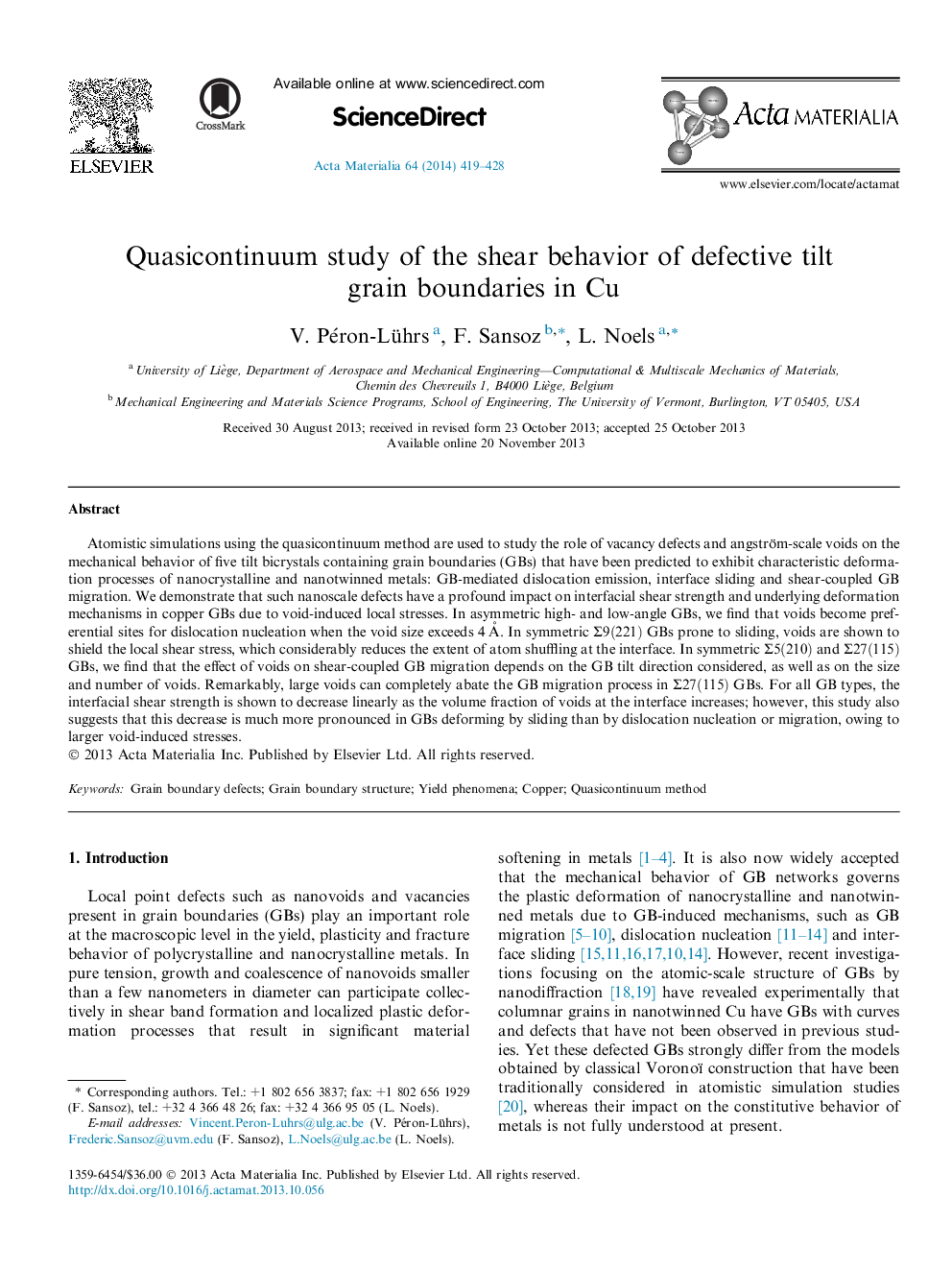| کد مقاله | کد نشریه | سال انتشار | مقاله انگلیسی | نسخه تمام متن |
|---|---|---|---|---|
| 7882699 | 1509612 | 2014 | 10 صفحه PDF | دانلود رایگان |
عنوان انگلیسی مقاله ISI
Quasicontinuum study of the shear behavior of defective tilt grain boundaries in Cu
دانلود مقاله + سفارش ترجمه
دانلود مقاله ISI انگلیسی
رایگان برای ایرانیان
کلمات کلیدی
موضوعات مرتبط
مهندسی و علوم پایه
مهندسی مواد
سرامیک و کامپوزیت
پیش نمایش صفحه اول مقاله

چکیده انگلیسی
Atomistic simulations using the quasicontinuum method are used to study the role of vacancy defects and angström-scale voids on the mechanical behavior of five tilt bicrystals containing grain boundaries (GBs) that have been predicted to exhibit characteristic deformation processes of nanocrystalline and nanotwinned metals: GB-mediated dislocation emission, interface sliding and shear-coupled GB migration. We demonstrate that such nanoscale defects have a profound impact on interfacial shear strength and underlying deformation mechanisms in copper GBs due to void-induced local stresses. In asymmetric high- and low-angle GBs, we find that voids become preferential sites for dislocation nucleation when the void size exceeds 4Â Ã
. In symmetric Σ9(221) GBs prone to sliding, voids are shown to shield the local shear stress, which considerably reduces the extent of atom shuffling at the interface. In symmetric Σ5(210) and Σ27(115) GBs, we find that the effect of voids on shear-coupled GB migration depends on the GB tilt direction considered, as well as on the size and number of voids. Remarkably, large voids can completely abate the GB migration process in Σ27(115) GBs. For all GB types, the interfacial shear strength is shown to decrease linearly as the volume fraction of voids at the interface increases; however, this study also suggests that this decrease is much more pronounced in GBs deforming by sliding than by dislocation nucleation or migration, owing to larger void-induced stresses.
ناشر
Database: Elsevier - ScienceDirect (ساینس دایرکت)
Journal: Acta Materialia - Volume 64, February 2014, Pages 419-428
Journal: Acta Materialia - Volume 64, February 2014, Pages 419-428
نویسندگان
V. Péron-Lührs, F. Sansoz, L. Noels,